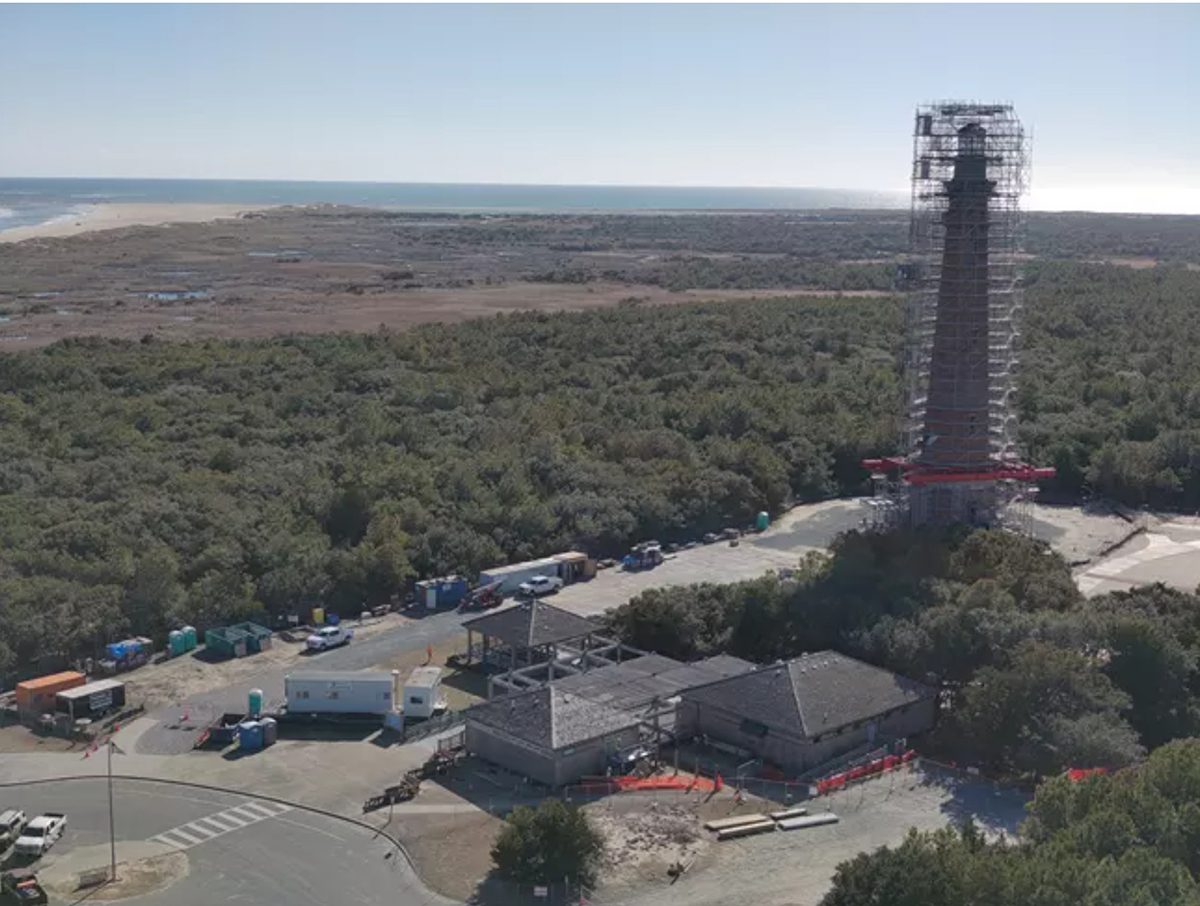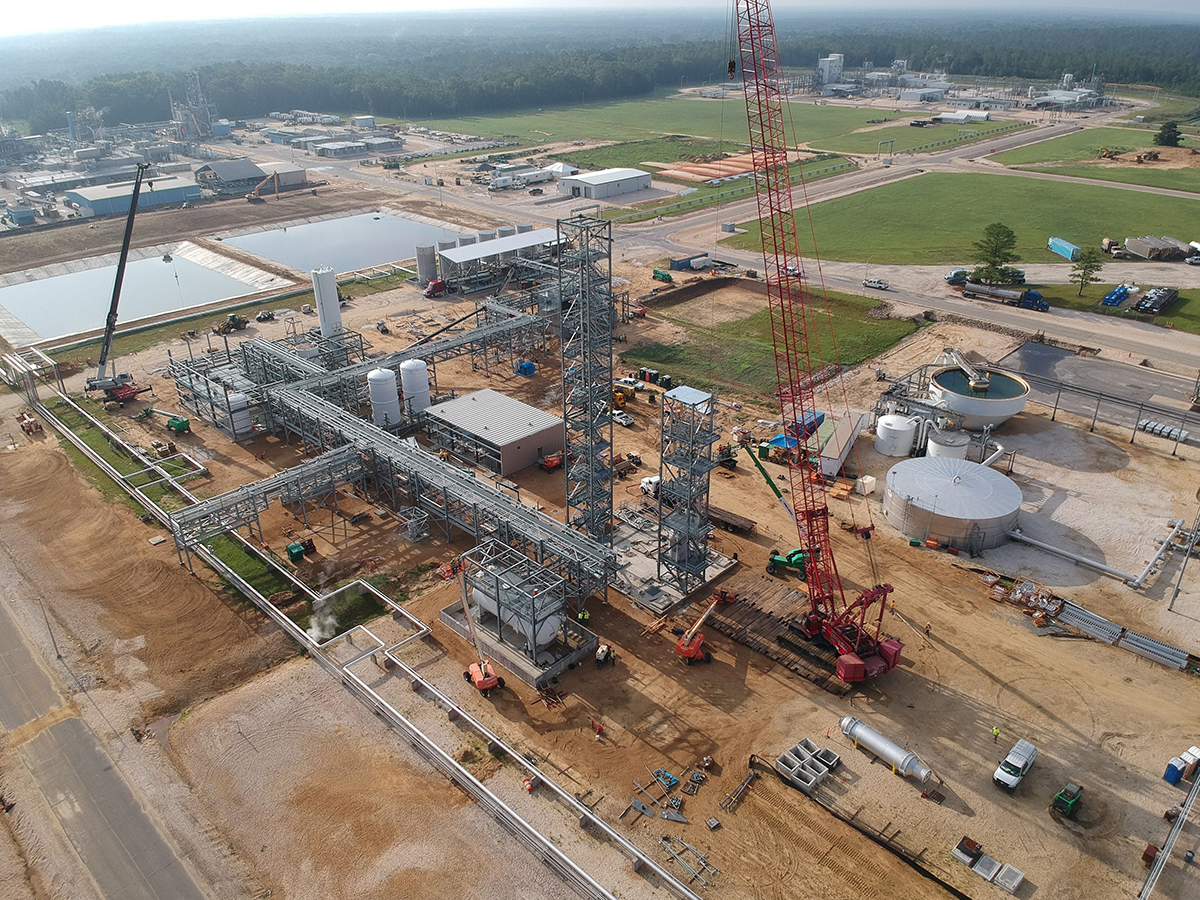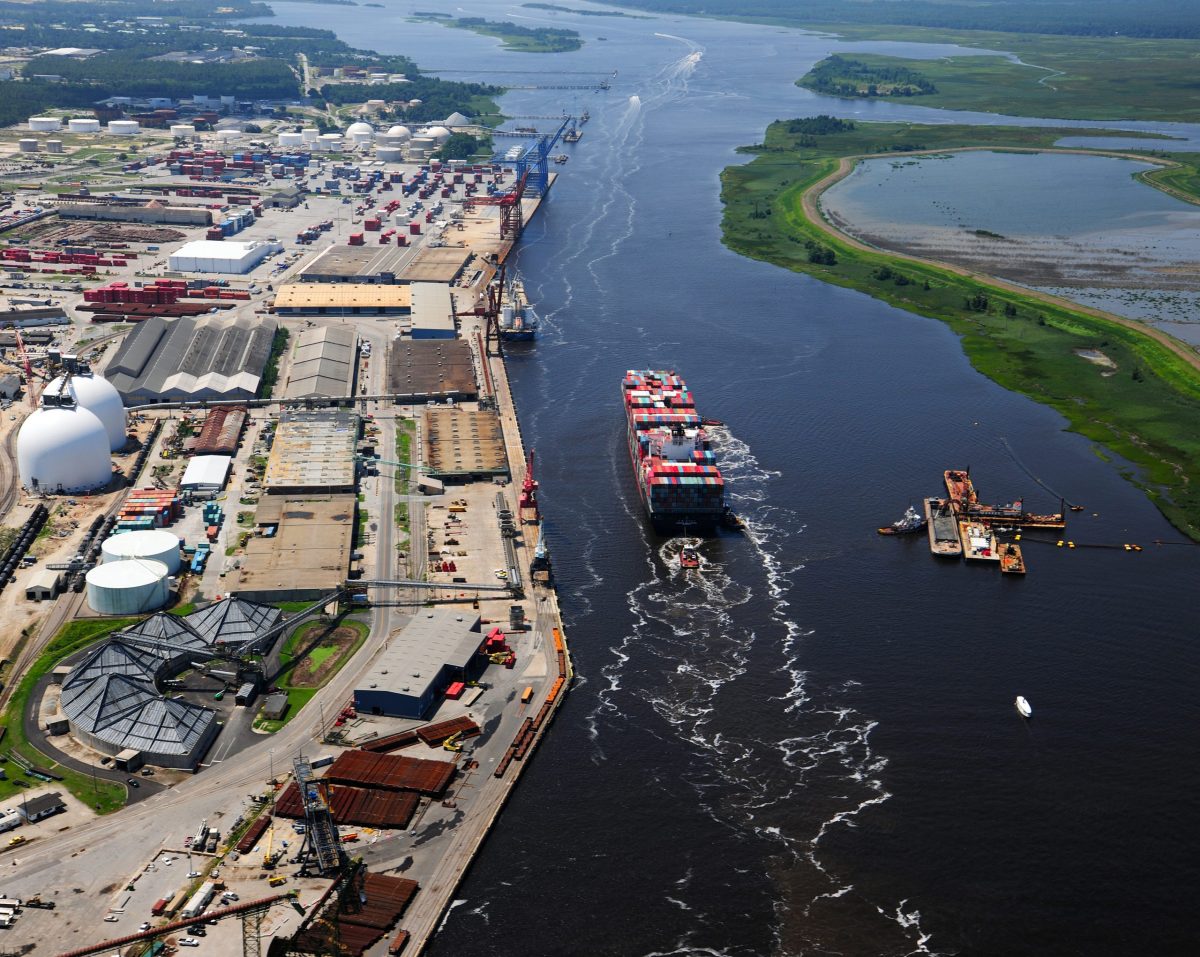
BUXTON — As anyone who owns an old house knows, repair projects often reveal unfortunate surprises. Such is the case with the first complete restoration of the 155-year-old Cape Hatteras Lighthouse, but the remedy will be considerably more complex.
Halfway into the $19.2 million project, potentially dangerous cracks in critical structural components of the tower’s ironwork have been discovered deep in the tower’s upper wall, creating inevitable project delays and unbudgeted cost increases.
Supporter Spotlight
In an update on the project provided Thursday during a virtual presentation, Lindsay Gravel, project manager for North Brookfield, Massachusetts-based contractor, Stone & Lime Masonry Restoration Services Inc., detailed recently uncovered degradation of iron support brackets near the top of the 198-foot-tall lighthouse.
Signs of deterioration had been first detected in 3D scans done in August, and engineers decided that further investigation was warranted inside the wall, Gravel told a small group of media.
“After we did this first round of exposure, we had the architectural and engineering team come out on site, and they had some concerns,” she said. “So with the shoring in place, we decided it was beneficial to expose the entirety of these brackets, each and every one.”
Out of the 16 brackets, 13 were severely cracked on the interior flange, and 15 had cracks on the exterior elbow, which engineers determined to be a structural concern. Looking deeper, more cracking was found in the interior web.
“So this has a large crack in this exterior component,” Gravel said, pointing to a slide showing the bracket. “And this is where the observatory deck plate sits on top. So this is where visitors will be walking, which is why these brackets are such a large component of the lighthouse for visitor safety.”
Supporter Spotlight
Gravel later added that each of the brackets weigh 2,200 pounds, while each deck plate weighs 1,000 pounds. “So 16 of those brackets, and 16 of those deck plates, it’s a lot of weight up there,” she said.
Cape Hatteras National Seashore Superintendent Dave Hallac said that the National Park Service has not yet determined what the additional work will cost. After a structural engineering model is developed to determine the cause of the cracking, recommendations will be devised for proposed repairs.
“And once we know what that repair prescription looks like, we will develop an estimate to do that work,” he said. “And then once we know what that total is, we’ll determine how we’re going to fund it.”
While he was not happy about the kink in the restoration plan, Hallac emphasized that he is pleased with the overall work.
“We actually have not seen a lot of unknowns in this project,” he said.
The project, which began in late 2023, was initially supposed to be completed in about 18 months.
The unexpected is to be expected during restoration of historic structures, Hallac said, and he lauded Stone & Lime for their expertise.
“They have made incredible progress on this project and done a really good job of working with us as a team to work through the challenges that have come up,” he said. “Because no project on a structure like this that’s unique and over 150 years old is going to move forward without some surprises.”
During her comprehensive review, Gravel provided a brief history of the lighthouse, followed by a head-spinning recitation of the work that has been completed, is underway, and is upcoming.
An overview
First, 25 levels of scaffolding were installed around the lighthouse. Then coatings on the exterior, including the famed swirled black-and-white day mark, and interior, including stairs, hand railings, landing beams, window sills, were removed. Metal components were primed to prevent rust. Mock-ups of new day marks were developed to test how they weather in different lighting.
Also about 700 bricks have been replaced, and 75 bricks repointed with natural cement, the historic stockade fence that went around the keepers’ buildings is being installed, the ornamental fence that had once encircled the lighthouse is being replicated, and landscape plantings have been installed.
Extensive work has also been done on many of the 269 lighthouse steps, parts of which had signs of corrosion, Gravel said. After a small crack was detected in one stair tread, the 255 stairs up to level 10 were surveyed, as well as some others. More than 100 stair treads will be repaired, and 44 treads, four brackets, 200 bolts, 120 nuts and 75 spindles will be replaced.
Gravel showed a photograph taken high up on the spiral staircase, with a missing step providing a dizzying peek of the black hole at the bottom — a view most lighthouse climbers would prefer to avoid.
“It’s not every day that you get to see the lighthouse with a missing tread in it,” Gravel said.
By incorporating the project’s modeling and precision molds created for components, Gravel said the technology helps the contractor’s team streamline its workflow, prevent errors and accurately capture the as-built conditions.
“This result is a high modern, high value approach that supports long term preservation efforts and leaves a detailed digital record to use for the future,” she said.
In 1999, the lighthouse was moved 2,900 feet inland to protect it from the Atlantic Ocean that swirled at its base. Although the dramatic and successful move protected the tower from being taken by the ocean, the historic 1870 lighthouse structure itself was not restored. But after the move, there were projects done to replace degraded stair treads, according to an email from the Park Service, responding to questions from Coastal Review.
After a chunk of metal fell in 2001 from a bracket on the lower staircase, the lighthouse got more attention.
Most of the stair treads were replaced in 2002 and 2008, the Park Service wrote. The current project will install tread replacements to replace those that were not originally replaced and those that are damaged, according to the information. The stair system’s spindles and bolts that hold them and the treads onto the stair stringers have corroded over time and “will be repaired or replaced based on their condition,” the email said.
Cracking in a couple of brackets had been known from investigations in the 1980s, the email said.
“At that time, architects and engineers recommended leaving the damaged lighthouse brackets alone because the load paths — the way that forces on the metal was routed from the top of the lighthouse to other areas — had likely been reestablished through the masonry following the cracking,” the email said. “In other words, any downward forces on the structure from the weight above was now being held up by the bricks in the limited areas where the cracked brackets were observed.”
Though potential cracking was anticipated, the email continued, the extent could not be known without removing multiple layers of brick.
“With substantially more cracking being observed now, bracket repairs or replacements will be necessary for the long-term structural integrity of the tower.”
Typically, about 1,500 visitors a day between April and October climb the lighthouse, the tallest brick beacon in the nation. The lighthouse is likely not going to reopen before 2026, or later depending on the bracket repair timeline. Meanwhile, Cape Hatteras National Seashore is currently developing new plans for climbing, the Park Service said.
“We expect that at least the same number of people will be able to climb annually,” according to the email. “There may be fewer people in the lighthouse at a time to help reduce crowding, but we expect at least the same number of people to be able to climb annually through expanded climbing opportunities throughout the day and year.”
The Cape Hatteras Light Station store, restrooms and portions of the grounds remain open to visitors.







